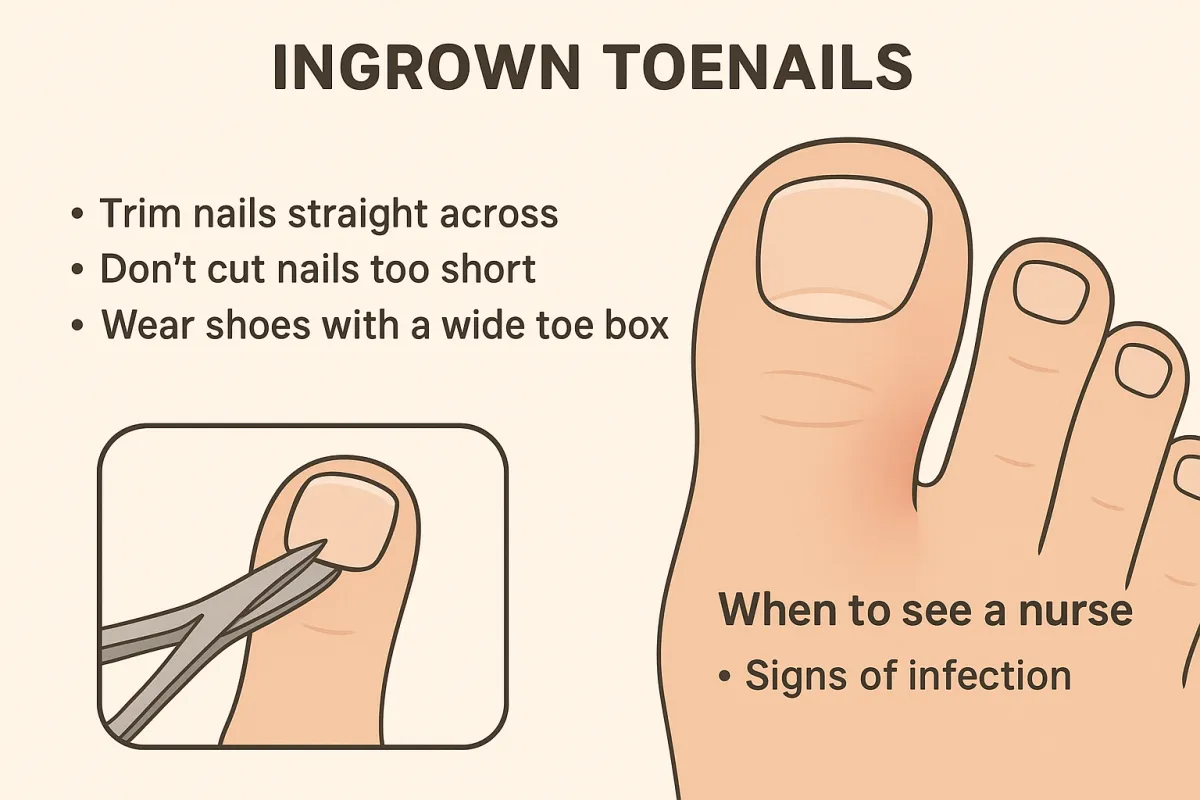
Ingrown Toenails: Prevention, and When to See a Nurse
Ingrown Toenails: Prevention and When to See a Nurse
Ingrown toenails are common and often painful. For seniors and people with circulation or sensation problems, they can lead to infection if not treated correctly. Here’s a clear, step-by-step guide.
What is an ingrown toenail?
An ingrown toenail occurs when the edge of the nail grows into the surrounding skin, causing pain, redness, and sometimes infection. If you have diabetes, circulation problems, or reduced sensation, treat ingrown nails as a priority because complications can be more serious. Diabetes Canada Guidelines
Prevention: practical tips
Trim nails straight across — don’t round the corners.
Don’t cut nails too short.
Wear shoes with a wide toe box and avoid tight or pointed footwear.
Keep feet clean and dry, and inspect them regularly.
These prevention steps match nursing foot-care best practices and the clinical recommendations for high-risk populations.
When to call a foot-care nurse (or your doctor) — red flags
Increasing pain, swelling or drainage
Fever or feeling unwell
Diabetes, vascular disease, or neuropathy (reduced sensation) — seek care early
If you can’t safely cut nails or the nail is very thick or misshapen
Canadian guidance emphasizes prompt professional assessment in higher-risk people to prevent serious complications. Diabetes Canada Guidelines+1
If an ingrown toenail is causing pain or you’re unsure how to treat it safely, book a nurse-led appointment with Soleful Harmony.